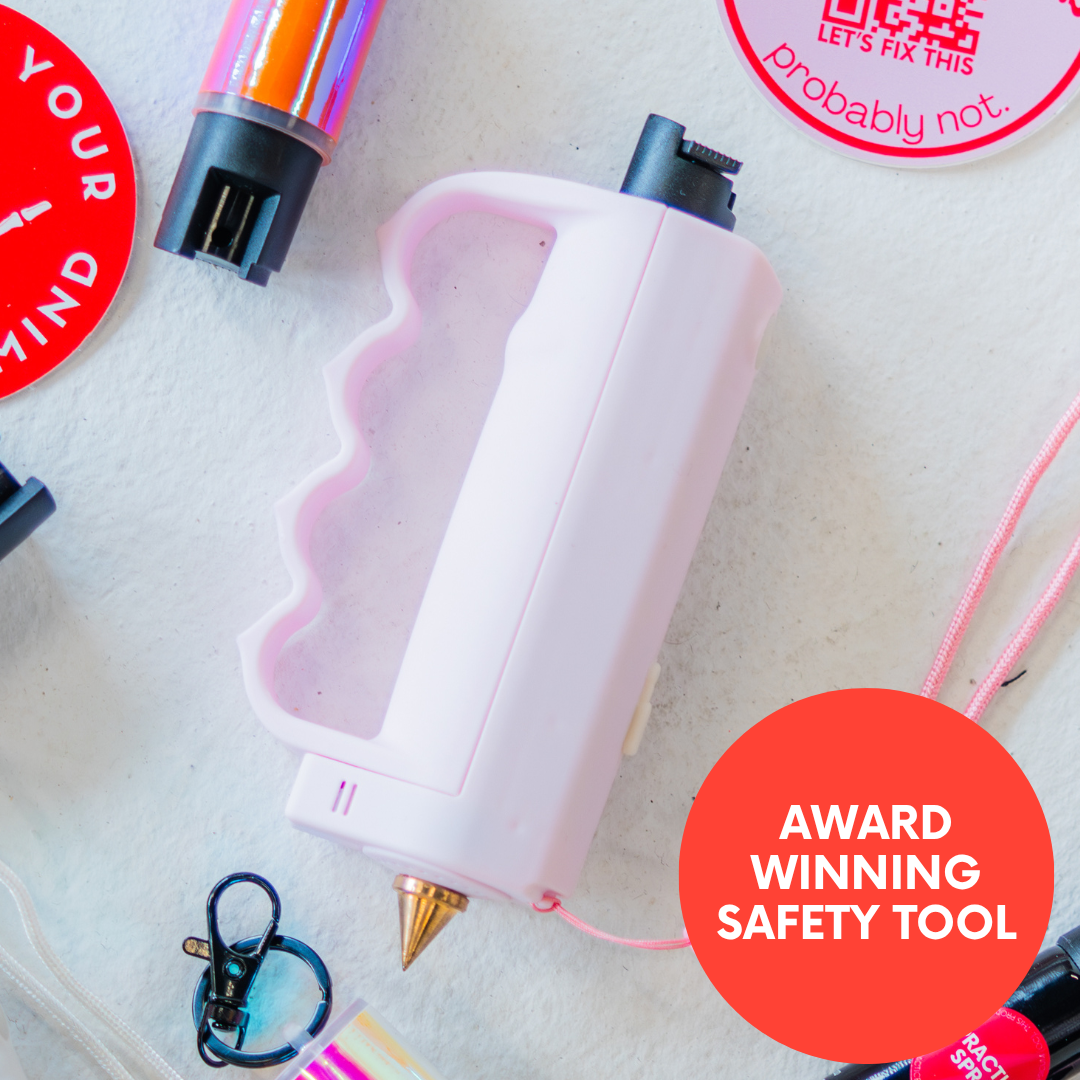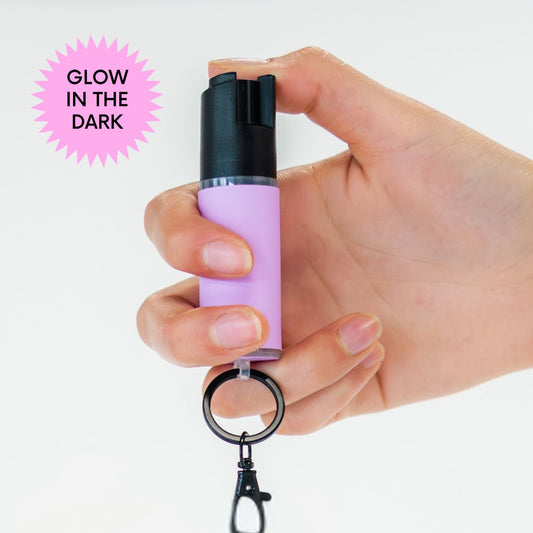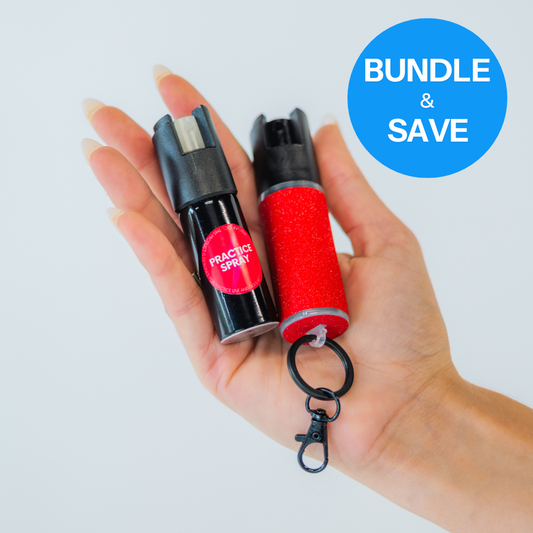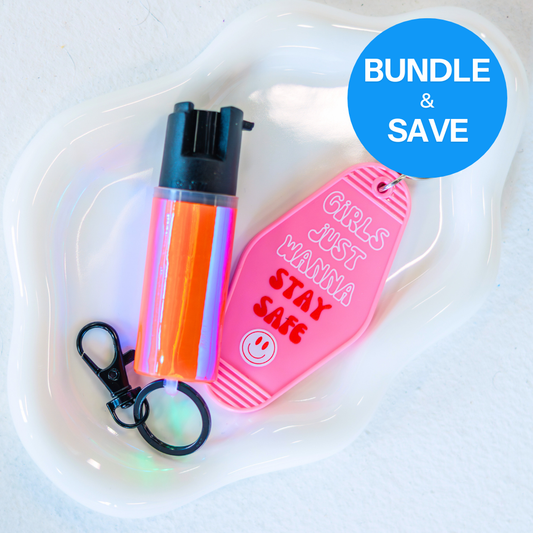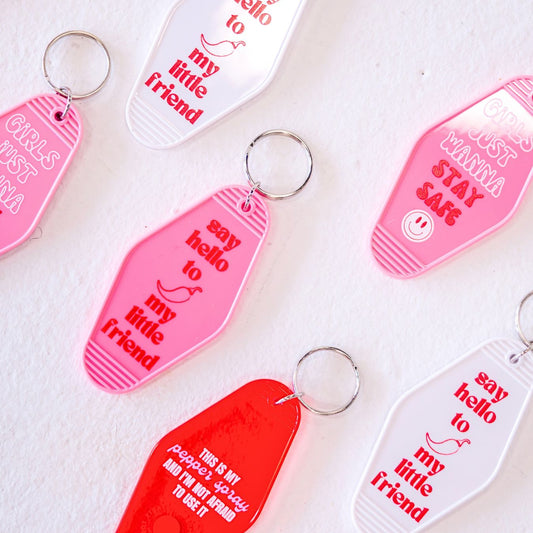Pepper spray is a popular non-lethal self-defense tool that has been used for decades. But how much do we really know about pepper spray?
In this post, we'll walk you through everything from how pepper spray is made to the effects it causes to help you learn more about this common device.
Here are some pepper spray facts you may not have known:
1. It's actually made from peppers.
Pepper spray is made from a pepper extract that is derived from the very same pepper used in your favorite hot sauce—capsaicin! Capsaicin is derived from chili pepper plants.
This pepper extract is then combined with other ingredients like propylene glycol to give pepper spray its signature burn.
Besides being a pepper-derived product, pepper spray also contains other pepper derivatives like oleoresin capsicum (OC). This is why pepper spray has such an intense effect on the eyes and skin.
2. It's not legal everywhere.
In most states, pepper spray is considered a legal form of self-defense. This means you can carry it on your person without fear of repercussion in many areas.
However, pepper spray isn't legal in every state. So if you're thinking of taking it on your next trip, make sure to check your state's local laws first!
If you're traveling with pepper spray, it's a good idea to keep it in your checked luggage instead of your carry-on. That way, you won't have any problems getting through security.
3. It has multiple use cases dating back to ancient China.
Pepper spray is not just for humans—it's also used by law enforcement and animal control to help quell disturbances.
Did you know pepper spray is such a potent force that even bears can’t stand it? That’s right! It was actually used to ward off bear attacks in Alaska back in the '70s. In fact, wildlife experts recommend pepper spray as a safe and effective way to ward off aggressive animals.
Pepper spray has also been used by police officers and civilians alike for thousands of years, with its first documented use dating back to ancient China.
It was used primarily by militaries in the early 1900s before being widely adopted as a personal self-defense tool. It wasn't until the 1970s that pepper spray became a popular choice for personal self-defense.
4. Its effects are the most painful in the eyes, nose, and throat.
The pepper in pepper spray can cause a burning sensation on the skin, but it can also affect the eyes, nose and throat.
It can even cause temporary blindness, difficulty breathing, coughing, and more.
Pepper spray has no long-term side effects in most cases, but it can cause temporary pain and inflammation for several hours after contact with the skin.
It will truly take your attacker by surprise and give you a chance to get away.
5. You can't build a tolerance to it.
That's right—you cannot build a tolerance to pepper spray.
It won't matter how many times you get pepper sprayed. The pepper spray will still sting and cause eye irritation, coughing, difficulty breathing, a burning sensation to the skin, runny nose, sneezing, and more.
6. They come in all shapes, sizes, and specs.
Pepper spray canisters are unique. Some pepper sprays come in unique shapes, like lipstick containers and pens. They can also be disguised as a cell phone case or belt buckle for extra discretion.
The contents can be liquid, gel, foam, or fog. Safely pepper spray is a lab-tested liquid and can spray up to 25 quick bursts up to 10 feet each. Each canister also contains utraviolet (UV) dye to make targets identifiable with every spray.
Pepper spray canisters also have an expiration date. It’s important to keep track of when the pepper spray expires so you know when it needs to be replaced.
If pepper spray has expired, it won’t be as effective. Safely pepper spray has a shelf life of 4 years—the best on the market.
Pepper spray canisters are specially designed to disperse a stream of pepper spray in a way that prevents the user from being affected by the spray themselves.
Final Thoughts
These pepper spray facts demonstrate how pepper spray is not just for self-defense, but it also has other practical and recreational uses.
Whether pepper spray is used to protect yourself, ward off animals, or as part of a pepper-eating contest, its effectiveness remains the same—to cause pain and irritation.
Whether you’re out in the wilderness or just walking around town, it never hurts to be prepared.
Do you have any interesting pepper spray facts to add? Let us know in the comments!
